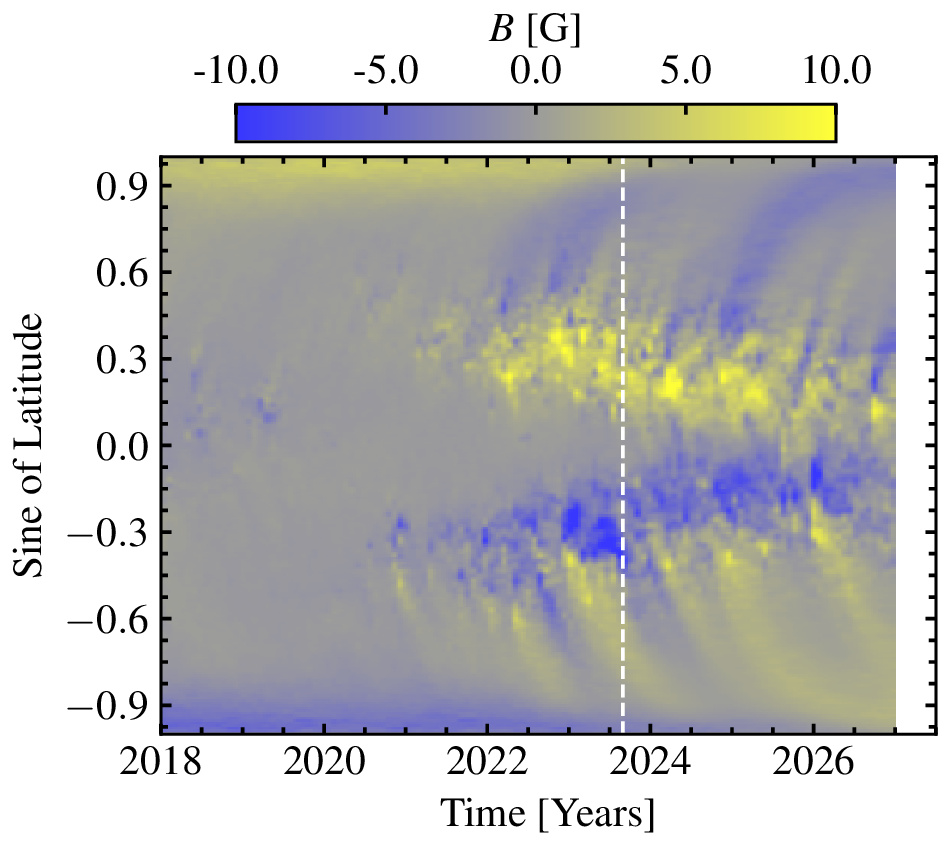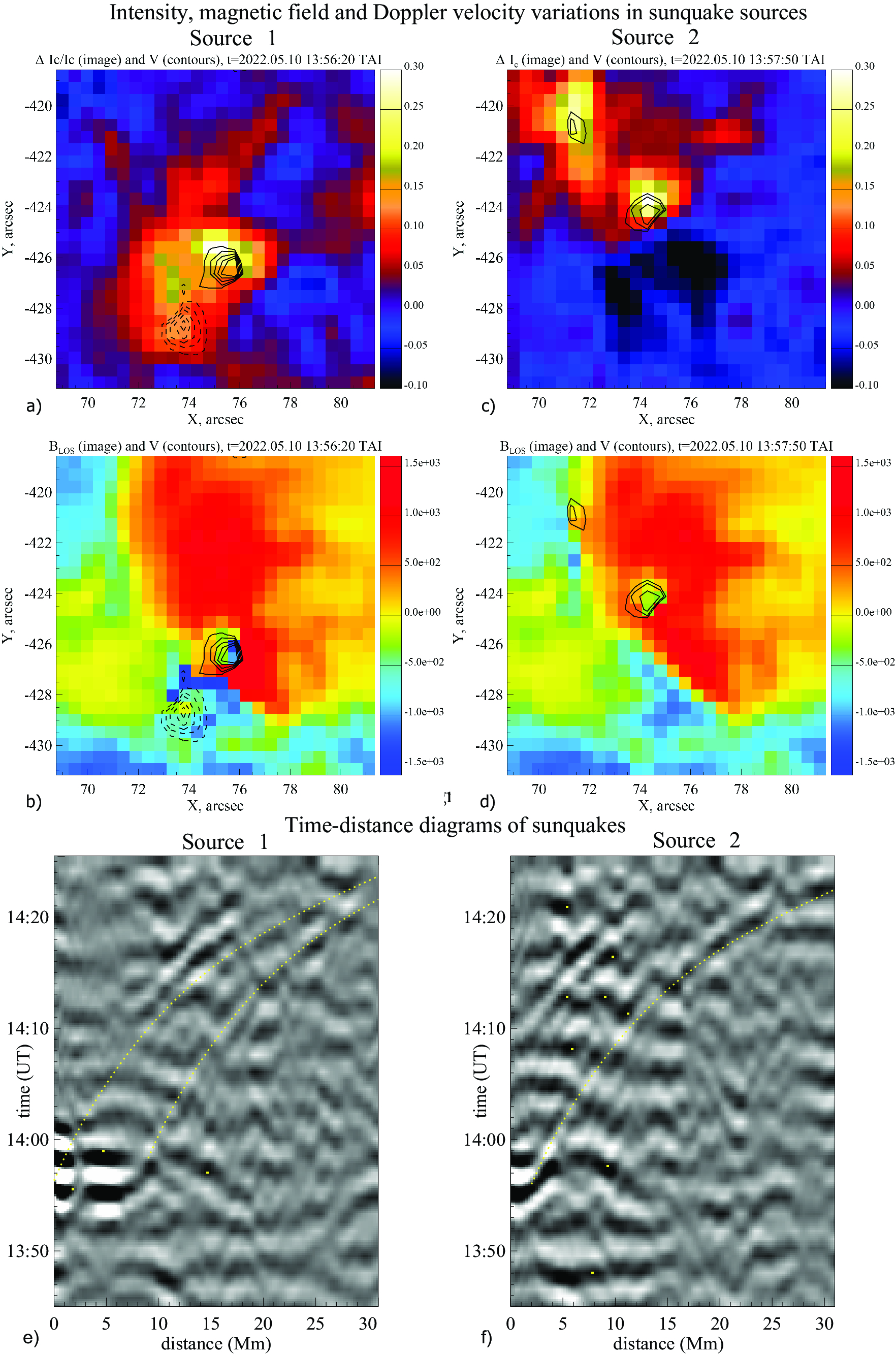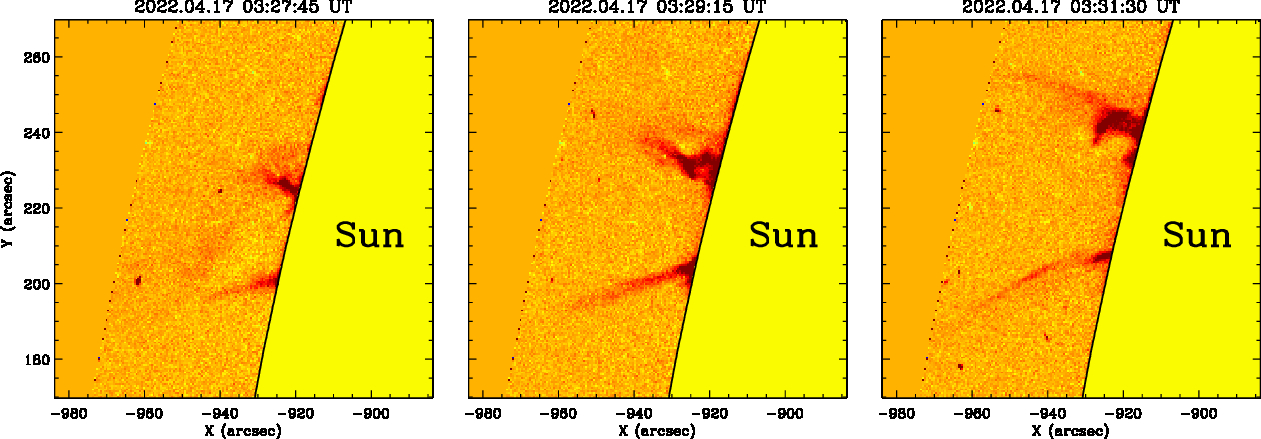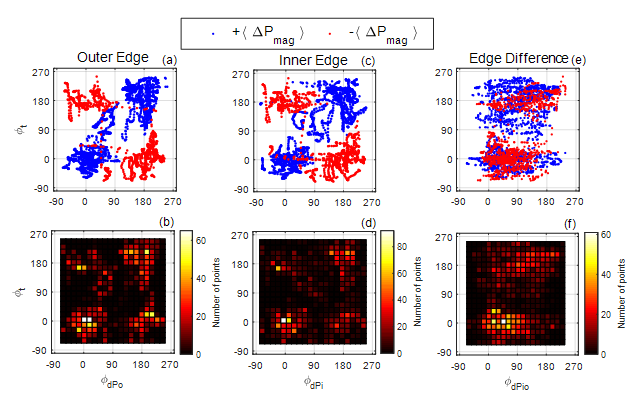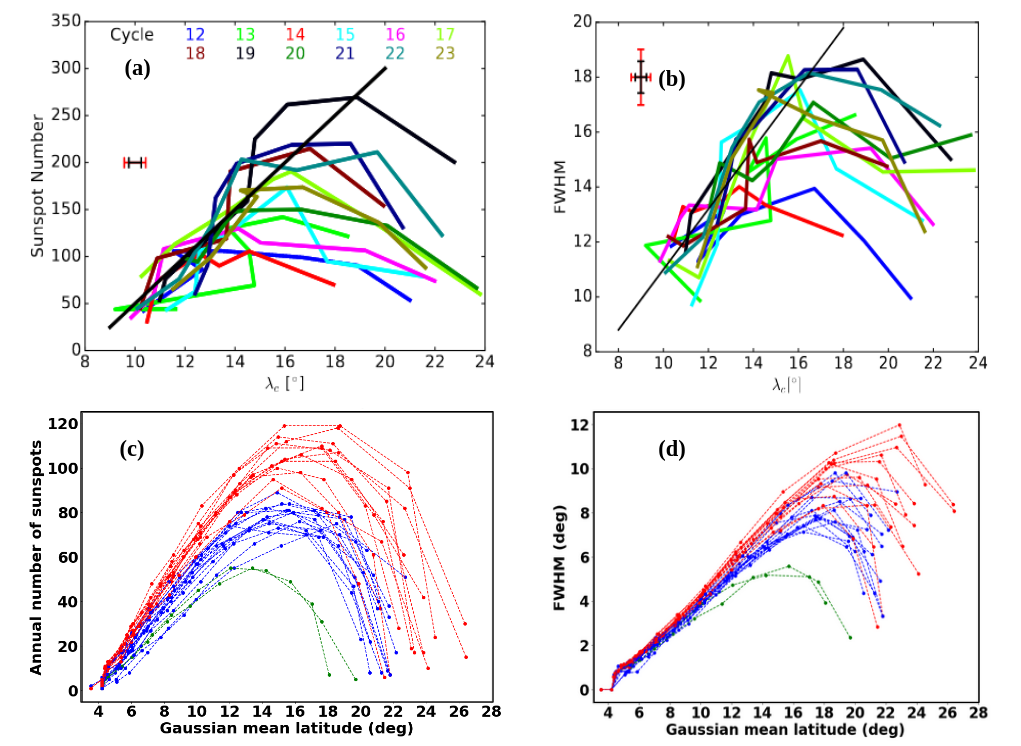198. Spectro-Polarimetric Properties of Sunquake Sources and the Origin of Sunquakes
197. Announcing the Availability of Online Catalogue of SDO/HMI-Observed Off-Limb White-Light Events
196. Observations of Rossby wave parameter variations during solar cycle 24
195. Cross-Referenced NOAA Active Region List for Multi-Rotation Active Regions, 2011-2019 Now Available
194. Rossby waves and the organization of photospheric magnetic fields
HMI magnetic field synoptic maps are used to evaluate the magnetic field structures’ organization and propagation as a function of time and latitude. It is demonstrated that the organization of longitudinal structures observed on synoptic maps is proportional to the level of activity at given latitudes.
193. Association Between Magnetic Pressure Difference and the Movement of Solar Pores
192. Magnetic helicity and free magnetic energy as tools for probing eruptions in two differently evolving solar active regions
An analysis of two active regions shows that differently evolving ARs may produce major eruptive flares even when, in addition to the accumulation of significant free magnetic energy budgets, they accumulate large amounts of both left- and right-handed helicity without a strong dominance of one handedness over the other.

